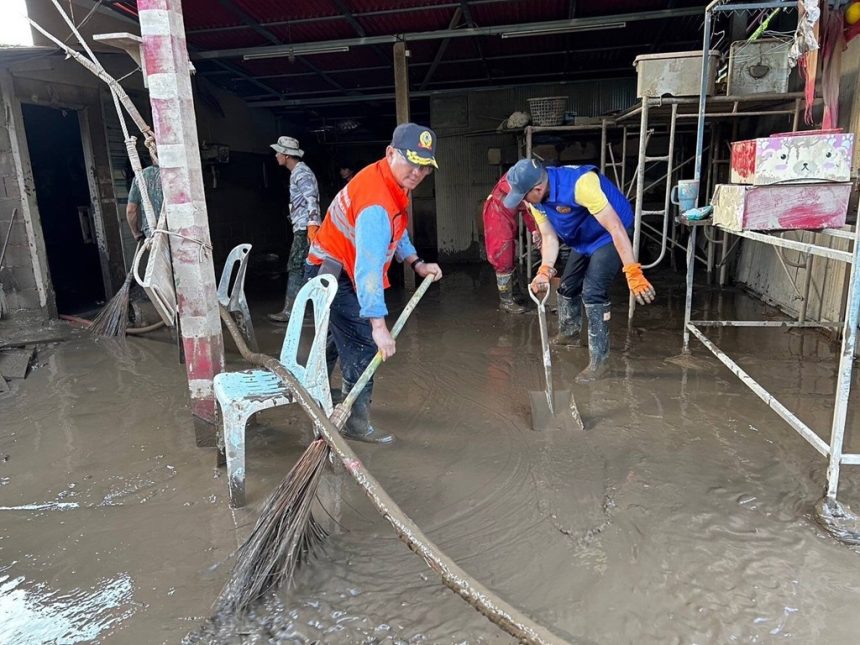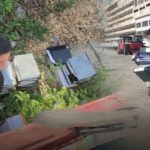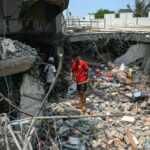People in Chiang Rai Province are now returning to their homes and businesses to survey the damage after the province experienced the worst flooding in almost 50 years. Chiang Rai Governor Puttipong Sirimart said the province is prepared to help and provide services for those affected.
After the water subsided, leaving behind mud and debris piles several meters thick, workers in Chiang Rai set out to clean, repair, and restore the flood-ravaged districts.
Governor Puttipong said he has assigned the Deputy Governor to work with local administrative organizations, private sectors, and volunteers to help people affected by the floods, especially communities along the Kok River, which were damaged on both sides.
He said machinery and cleaning equipment had been brought in to help the affected people urgently in Pangiew, Thet Phrakiat, Ratchadet Damrong, Thawirat, Koh Loi, Ban Rai, Hong Li, Doi Thong, and Nam Lat districts.
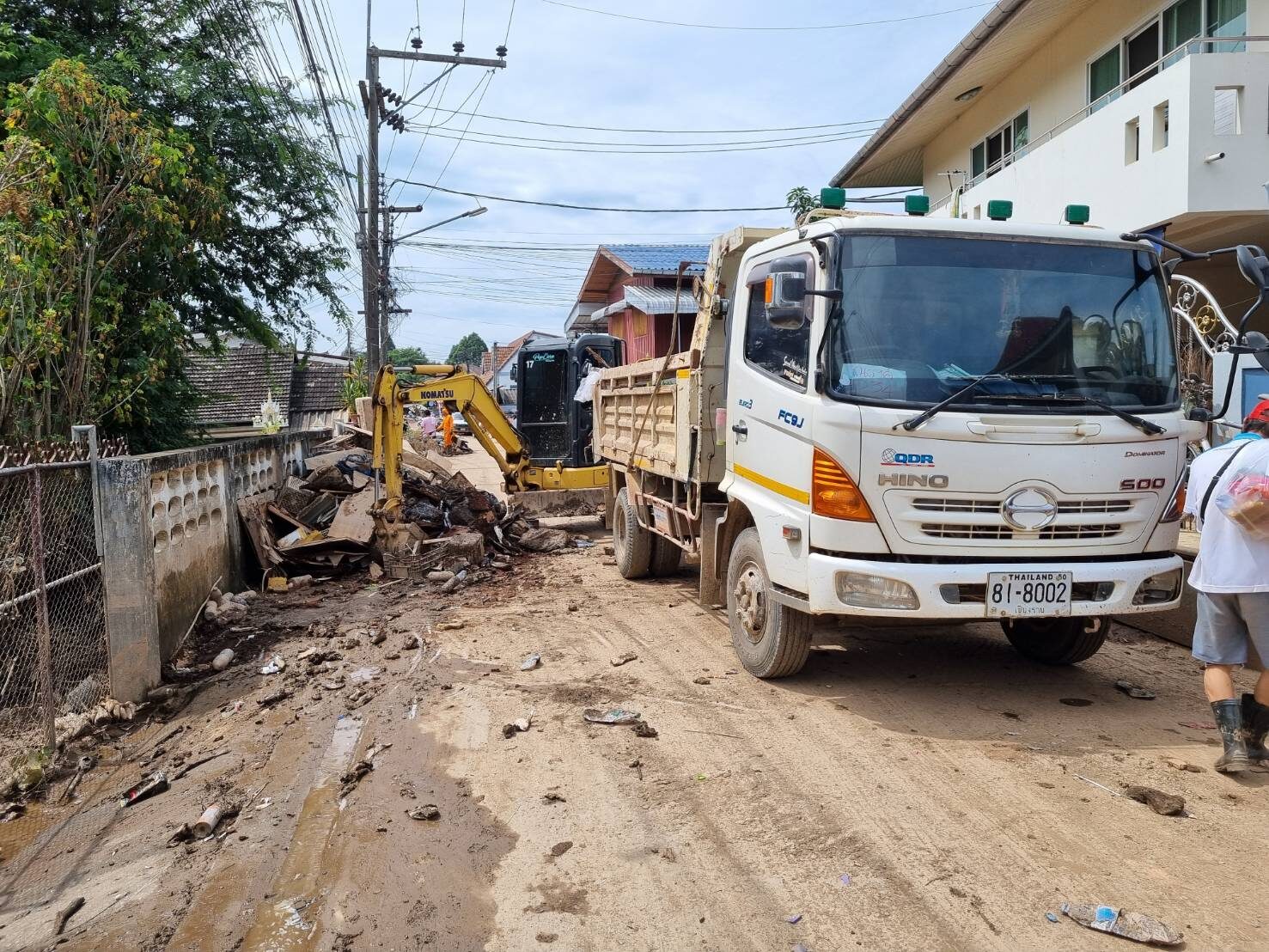
Community leaders have been assigned to survey the damage and the people’s needs and help homeowners, residents, and volunteers clean up and remove damaged items from homes so that Chiang Rai sanitation department workers can remove them.
After the floods receded, he said restoration has been quite difficult because a lot of mud accumulated in some areas, some of which flowed into and blocked the city drains, preventing water from being drained from houses or roads.
Some areas of Chiang Rai are still flooded, and in some communities and large trucks being used to remove waste are still unable to enter, especially in the Koh Loi and Wang Din communities. Garbage and damaged property are piling up in front of houses and on the roadsides.
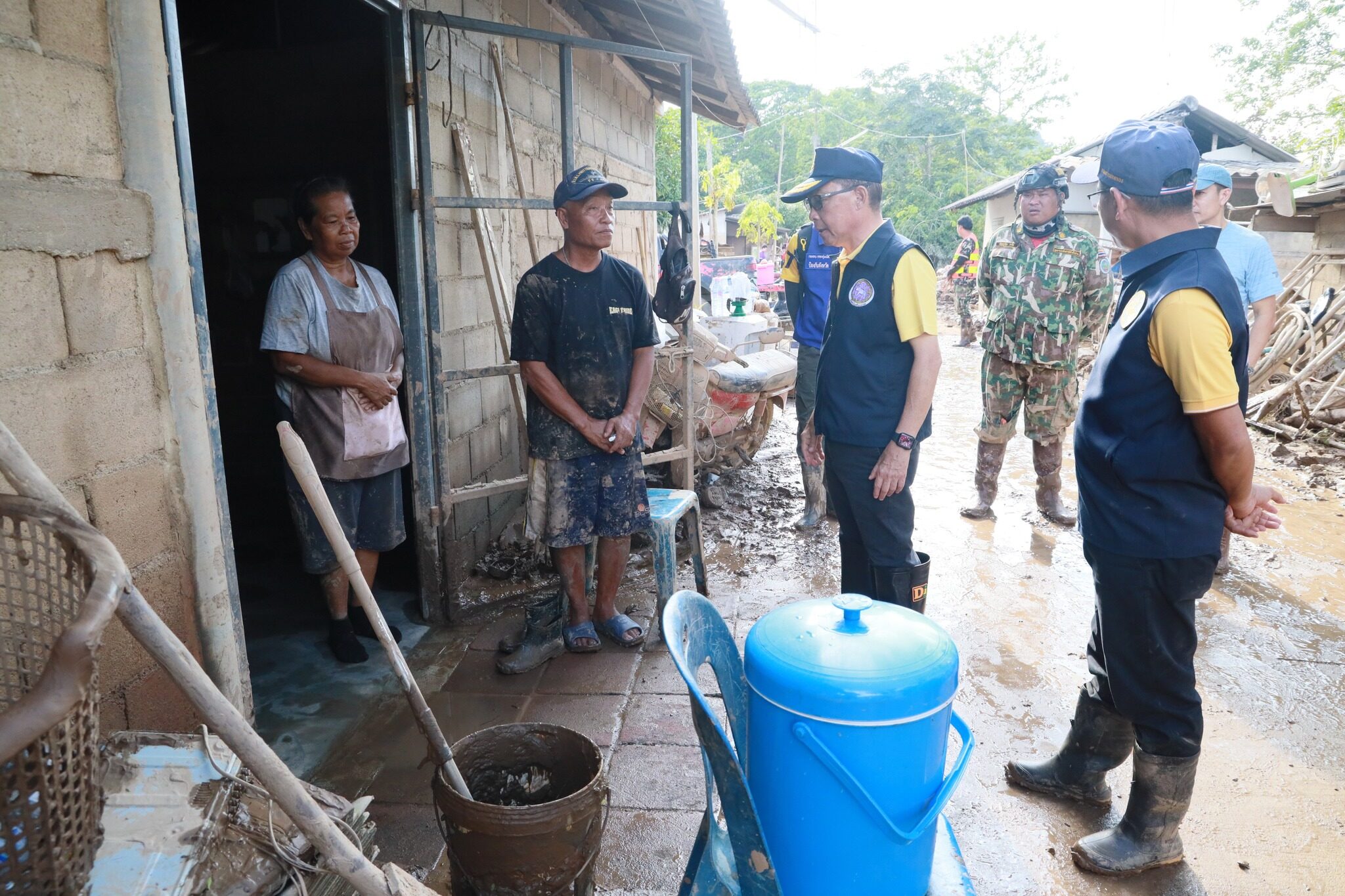
Ms. Naruedee, 58, a resident of the Koh Loi community, said that the flooding this time was very severe and damaged her property and everything inside her house. There is nothing left, she said. She does not know what the future holds for her family.
I have no money because my income comes from working as a housekeeper in the community. Sometimes, I get a few hundred baht; sometimes, I don’t get anything. I don’t know how she will find money to buy new furniture or clothes for her son to attend school.
We barely had enough to eat and relied on relief bags to survive. Our house is in an alley, and the relief bags rarely arrive, so I earn very little. She was not hired as a housekeeper because her employer’s house was flooded.
She would like kind-hearted people to help her family, especially so her son can attend school. As for her and her family, she said we will gradually find work to earn money to buy household items little by little.
Meanwhile, the Mengrai Maharaj Camp Hospital has organized a medical service team to go to the area to help restore mental health, provide basic health check-ups, provide medicine and medical supplies, and advise on self-care to prevent diseases that come with flooding to those affected by flooding in many communities.
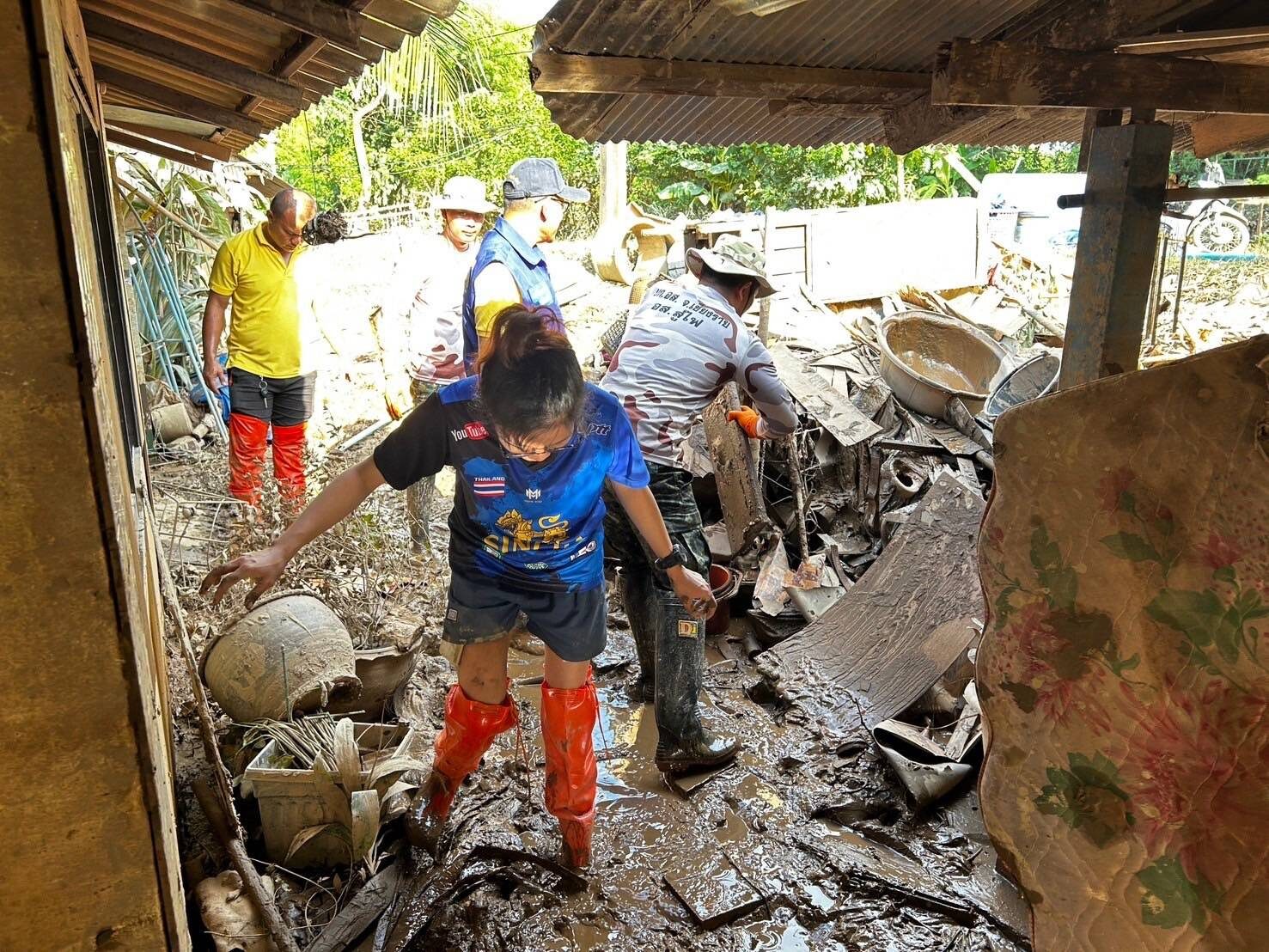
The flood situation at the Thai-Myanmar border area in Mae Sai District continues to decrease. The level of the Sai River allows the Lai Lom Joy Market, Hua Fai Community, and Pa Yang Community to return to normal.
Officials from the administrative sector, local administrative organizations, soldiers, police, and volunteer villagers have mobilized their forces to help clean up the restored area.
However, the Hua Fai Community recovery will still take several more days because of the mud and sand. The local people have had to mobilize trucks to gradually scoop sand off the roads. Some houses were buried by sand and mud 1-2 meters high.
Mae Sai irrigation officials report the Sai River has receded to its normal level of about 4 meters, but water has still overflowed its banks and flooded houses in low-lying areas in Koh Sai, Mai Lung Khan, and Mueang Daeng. Mae Sai District, Mae Sai Municipality.
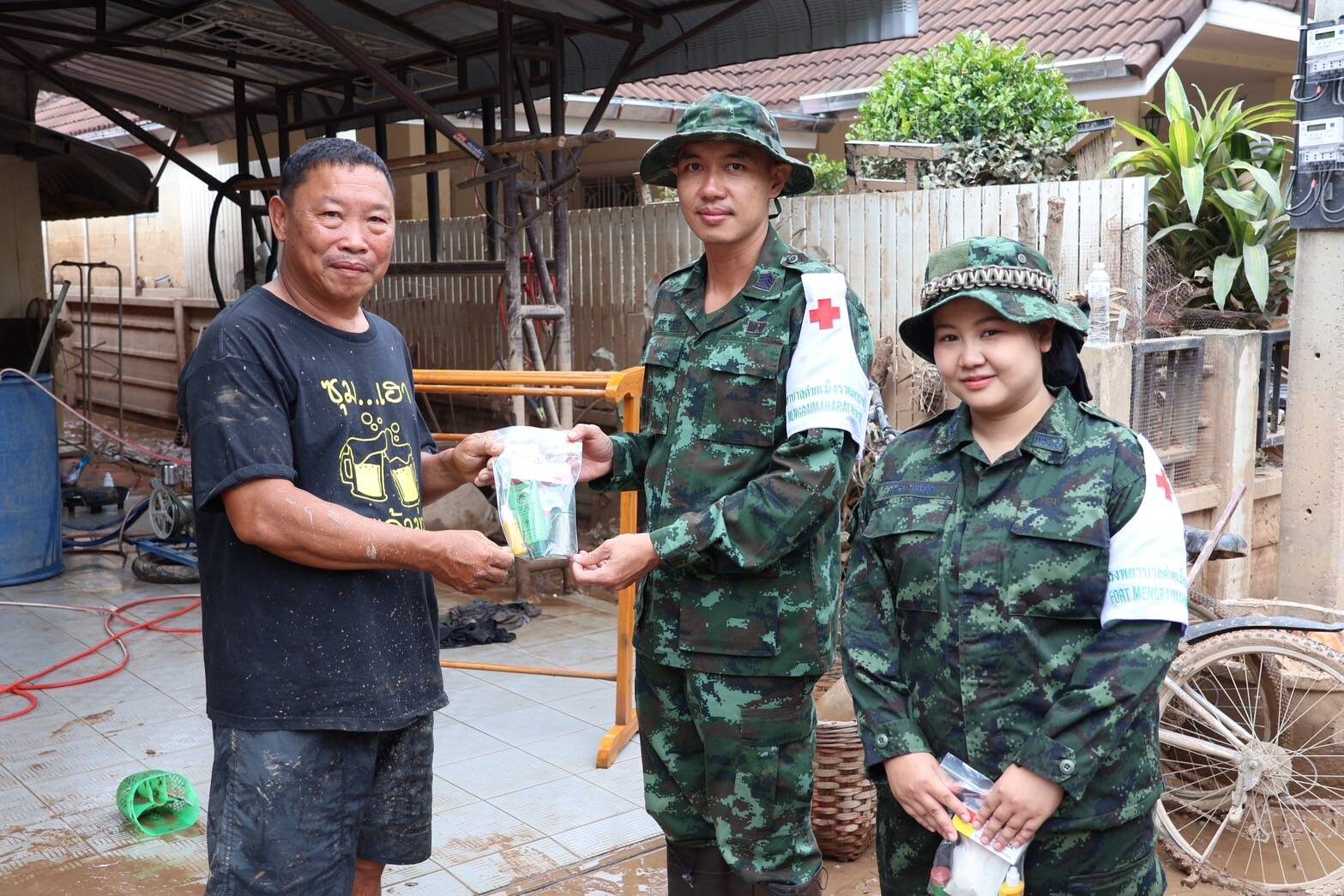
Soldiers from the 37th Infantry Division have brought in machinery and sandbags to try to block the water flow. The water is fast-flowing in some places, making it difficult to block. Officials say it will take a few more days to get the flooding under control.
The President of Chiang Rai Provincial Administrative Organization, Mrs. Atitathorn Wanchaithanawong, said that she had requested approval from the Chiang Rai Provincial Administrative Organization Council for a budget of 49,926,540 baht to provide assistance and relief to people affected by the flood in Chiang Rai Province.
According to the regulations and criteria, the budget is for clothing, not exceeding 1,100 baht per person, and for tools for occupation. The actual cost per family is no more than 11,400 baht, the cost of kitchenware and cooking equipment is no more than 3,500 baht per family, and the cost of bedding is no more than 1,000 baht per person.
Mr. Athitathorn said that Amphoe Thong, Amphoe Khun Tan, and Amphoe Wiang Kaen, who were previously hit by floods, will receive assistance first. As for some areas of Amphoe Mueang Chiang Rai and Amphoe Mae Sai, the water has not completely dried up yet, and officials are still restoring and helping victims first.
When the situation returns to normal, and the survey is completed, assistance will be considered according to their criteria. In the long term, public areas such as bridges, roads, or various public utilities will be taken care of and repaired.
Trending:
Thousands Flock to Doi Inthanon to Experience the Beginning of Winter
Thousands Flock to Doi Inthanon to Experience the Beginning of Winter

Geoff Thomas is an award winning journalist known for his sharp insights and no-nonsense reporting style. Over the years he has worked for Reuters and the Canadian Press covering everything from political scandals to human interest stories. He brings a clear and direct approach to his work.




